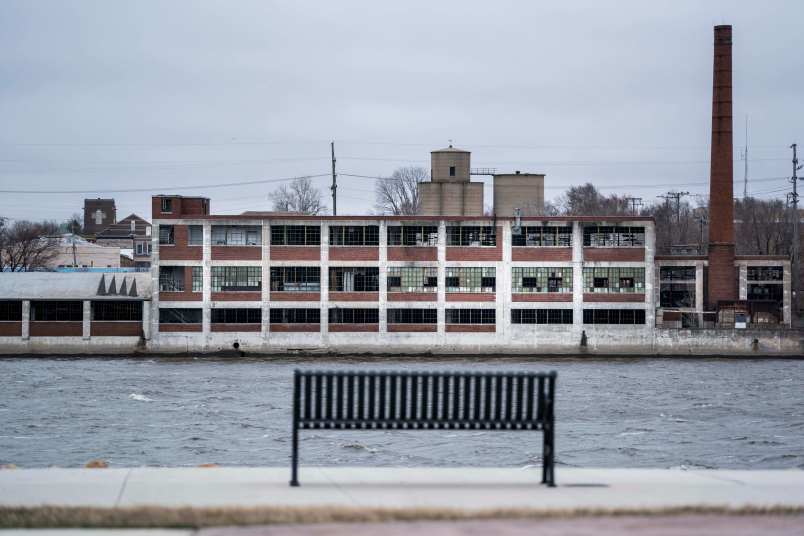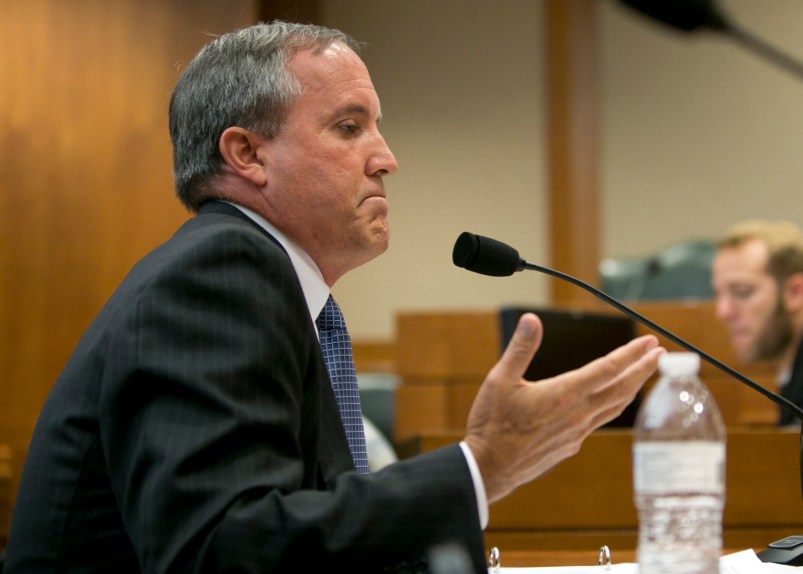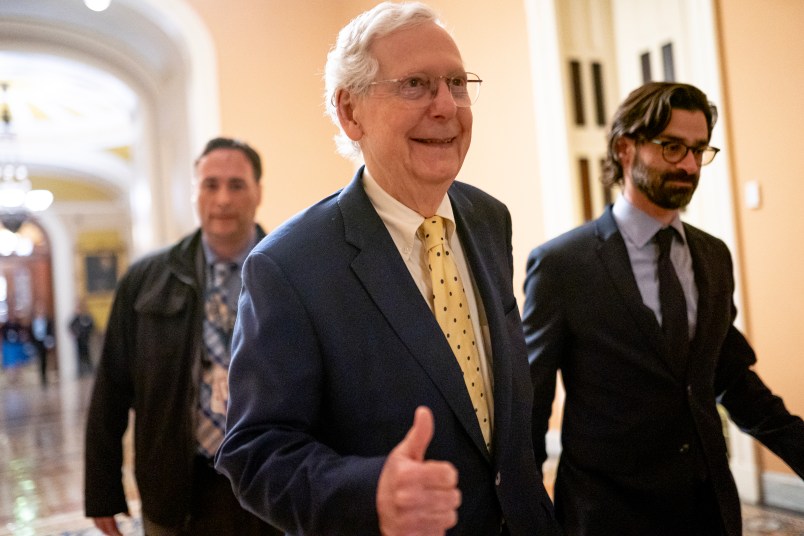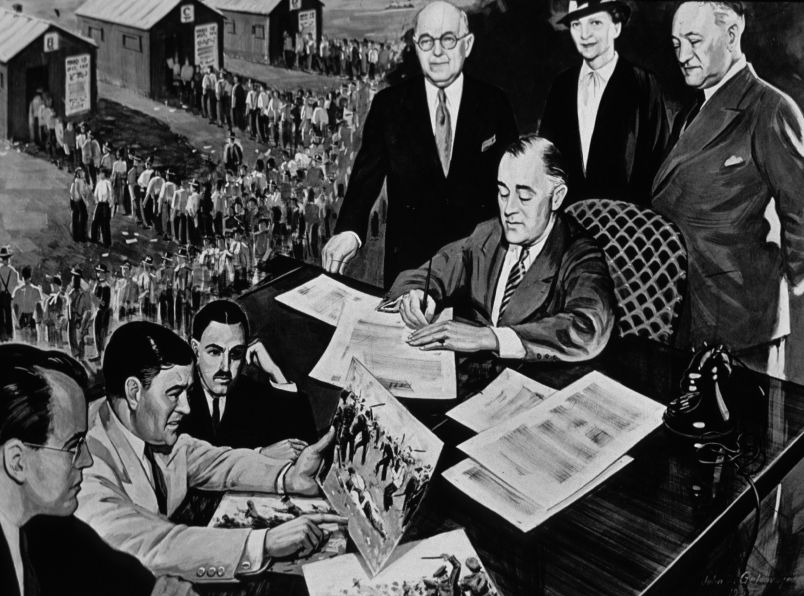This article is part of TPM Cafe, TPM’s home for opinion and news analysis.
In a towering act of sycophantry, the National Association of Manufacturers announced Friday that it will be giving Ivanka Trump the organization’s first ever Alexander Hamilton Award for “extraordinary support of manufacturing in America.” The organization made the outrageous claim that “no one” — no one! — has ever “provided singular leadership and shown an unwavering commitment to modern manufacturing in America” like she has.
NAM is a trade group representing the interests of the manufacturing firms. In September, Ivanka and NAM’s Manufacturing Institute announced an expansion of a skills training and apprenticeship program created by Toyota Motor North America. Apparently, this constituted leadership and commitment to an industry like mankind has never seen.
Let’s set aside the fact that Ivanka’s own businesses (and her father’s) frequently manufacture their products abroad, and just focus on manufacturing in the United States. As the President runs for reelection, he is pointing to a strong economy as a “success” for American workers and touting what he says is a resurgence in blue collar jobs.
But this ignores a key fact: manufacturing entered a recession in 2019!
By October of last year, U.S. manufacturing had seen two consecutive quarters of contraction. The sector shed 5,000 jobs in December and 12,000 jobs in January. In December, the Institute of Supply Management’s manufacturing index displayed the fastest rate of contraction since June 2009. And although the ISM suggests an uptick may be on the horizon, the sector still lags behind most others.
So whatever Ivanka and the Trumps are up to, it ain’t working.
Unlike most sectors, manufacturing is one in which Trump has taken direct action in the form of tariffs and despite his righteous, self-congratulatory bluster, they have likely amounted to a net decrease in employment.
Let’s look at steel tariffs, ostensibly meant to increase domestic production of steel. Well, we have added roughly 1,000 jobs in steel production, but estimates show we may have lost 75,000 manufacturing jobs where steel is an input. So more people are making steel, but way fewer people are using the steel. It’s a net loss.
What is a manufacturing success? I think most of us would say increased employment and increased wages. Further still, we’d probably say improved working conditions. However, in this context it’s challenging to see any extraordinary results.
According to the Federal Bureau of Labor Statistics, manufacturing employment peaked in June 1979 with about 19.5 million workers. Employment had already fallen precipitously by the time the U.S. entered the 2007 recession, when the number of Americans employed in manufacturing stood at 13.7 million. The industry bottomed out around February 2010 at 11.4 million. By the time Obama left office in December 2016, manufacturing had rebounded to 12.35 million. At the end of January, this figure was 12.85 million — following two straight months of declines.

Put another way: Manufacturing employment is 34 percent lower than it was at its peak in 1979. Manufacturing employment has grown 3.5 percent since Obama left office, lagging overall non-farm employment which has grown by 4.5 percent.
Diving further into the numbers reveals that manufacturing jobs are no longer more lucrative than the average job. From the BLS:
In 1990, average hourly earnings of production workers in manufacturing ($10.78) were about 6 percent greater than those of production or nonsupervisory workers in the total private sector ($10.20). By 2018, however, manufacturing workers were earning approximately 5 percent less ($21.54) than their total private sector counterparts ($22.71). Over this same period, manufacturing production workers’ share of total private sector employment fell by half, from 17.2 percent in 1990 to 8.5 percent in 2018.
Another way to measure success is to look at growth in total production. Every month, the Institute for Supply Management issues a report on the economic activity of the sector. The good news is that the index was 50.9 in January. (Anything over 50 indicates expansion, anything under indicates contraction.) The bad news is that while the broader economy has expanded for 129 straight months, this was the first time since June of 2019 that the index showed growth. Further, it’s unclear how real or sustainable this expansion is. The ISM report shows that to the degree there’s any positive change, it originates in either pharmaceuticals or computer and electronic products. Tariffs, Trump’s favorite thing, are not helping.
During his State of the Union, Trump talked about a “blue-collar” boom and how we are “restoring our nation’s manufacturing might.” But he’s added fewer jobs than Obama did and manufacturing spent the final two quarters of 2019 in a recession. In the words of manufacturers themselves, further growth is far from guaranteed or even expected.
Meanwhile, this week the House passed meaningful legislation to help manufacturing workers in the form of the PRO Act. It has no chance in the Republican-controlled Senate. The PRO Act aims to strengthen workers’ union rights by limiting companies’ ability to interfere with organizing efforts, creating penalties for employers who fire or retaliate against workers trying to form a union, and protecting workers’ right to strike and protest (among other things). An organization that advocates for workers in manufacturing, as opposed to the owners of manufacturing — the AFL-CIO — strongly endorses the PRO Act.
It’s a law that will help America’s blue-collar workers, but will go nowhere.
This is the state of American politics. I’m sure the White House is preparing to take a victory lap based on Ivanka’s manufacturing award.
One could argue — and pundits do — that manufacturing is the symbolic foundation of the blue collar support Trump supposedly has. Trump loves the working people, they say. Nobody has done more for ordinary Americans than Donald and Ivanka, they say.
It’s all nonsense. This administration’s policies have hurt manufacturing and continue to do so.
Joe Ragazzo is TPM’s publisher.









